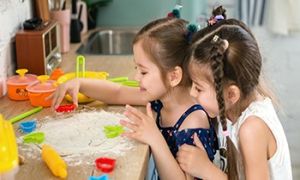Every photograph, every story, contributes to a child’s digital footprint, often in ways they cannot fully understand or consent to. This is where the concept of safe pedagogical photography emerges: a conscious, ethical approach to capturing learning moments that celebrates children’s growth while safeguarding their privacy.
Safe pedagogical photography is more than a technique; it is a philosophy. It is the conscious choice to capture teaching and learning moments in ways that protect children’s privacy while still celebrating their growth.
Key principles include:
-
Consent: Always seeking permission before taking images.
-
Clarity: Recognizing that children may not fully understand what “sharing online” means.
-
Privacy: Avoiding practices that add to a child’s digital footprint.
Examples in Practice
Safe pedagogical photography can take many forms:
-
Learning Materials Focus
Instead of photographing a child directly, capture the books, puzzles, or blocks they are engaging with. This highlights the learning process without identifying the child. -
Artwork as Representation
Showcase a child’s painting, drawing, or craft project as the central image. The child’s creativity is celebrated while their privacy is protected. -
Hands and Gestures
Photograph hands mixing ingredients, stacking blocks, or painting. These images convey action and engagement without revealing faces. -
Contextual Environment
Use wide shots of the learning space, outdoor play area, or classroom setup to show the environment where learning occurs, rather than focusing on individuals. -
Symbolic Objects
Highlight tools of play and learning—like magnifying glasses, musical instruments, or building materials—as stand-ins for the child’s experience. -
Group Learning Stories
Capture group activities from behind or at a distance, where children’s identities are not easily discernible, but collaboration and joy are still visible. -
Process Over Product
Document the steps of an activity (e.g., mixing, building, experimenting) rather than the final image of a child holding up their work. -
Creative Cropping
Use framing techniques to show partial views—like feet in sand, shadows on the wall, or silhouettes—adding artistry while protecting privacy.
Safe pedagogical photography is not just a practice—it is a commitment to honouring children’s rights in a digital age. By consciously choosing how we capture and share learning, we protect children’s privacy while still celebrating their growth, creativity, and discovery.
As educators and families, we hold the responsibility to ensure that documentation uplifts without exposing and that every image reflects dignity and respect.
Further Reading
Safe Use of Images and Videos of Children in Early Childhood
Q: What Is A Photo Observation
Photo Observations In Childcare
Q: Do All Observations Require A Photo?



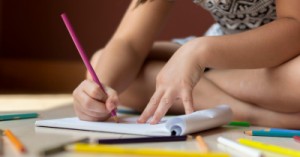
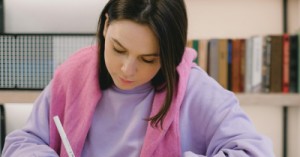
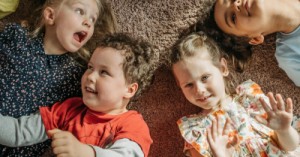
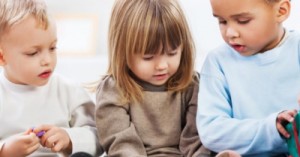
 Here is the list of the EYLF Learning Outcomes that you can use as a guide or reference for your documentation and planning. The EYLF
Here is the list of the EYLF Learning Outcomes that you can use as a guide or reference for your documentation and planning. The EYLF The EYLF is a guide which consists of Principles, Practices and 5 main Learning Outcomes along with each of their sub outcomes, based on identity,
The EYLF is a guide which consists of Principles, Practices and 5 main Learning Outcomes along with each of their sub outcomes, based on identity, This is a guide on How to Write a Learning Story. It provides information on What Is A Learning Story, Writing A Learning Story, Sample
This is a guide on How to Write a Learning Story. It provides information on What Is A Learning Story, Writing A Learning Story, Sample One of the most important types of documentation methods that educators needs to be familiar with are “observations”. Observations are crucial for all early childhood
One of the most important types of documentation methods that educators needs to be familiar with are “observations”. Observations are crucial for all early childhood To support children achieve learning outcomes from the EYLF Framework, the following list gives educators examples of how to promote children's learning in each individual
To support children achieve learning outcomes from the EYLF Framework, the following list gives educators examples of how to promote children's learning in each individual Reflective practice is learning from everyday situations and issues and concerns that arise which form part of our daily routine while working in an early
Reflective practice is learning from everyday situations and issues and concerns that arise which form part of our daily routine while working in an early Within Australia, Programming and Planning is reflected and supported by the Early Years Learning Framework. Educators within early childhood settings, use the EYLF to guide
Within Australia, Programming and Planning is reflected and supported by the Early Years Learning Framework. Educators within early childhood settings, use the EYLF to guide When observing children, it's important that we use a range of different observation methods from running records, learning stories to photographs and work samples. Using
When observing children, it's important that we use a range of different observation methods from running records, learning stories to photographs and work samples. Using This is a guide for educators on what to observe under each sub learning outcome from the EYLF Framework, when a child is engaged in
This is a guide for educators on what to observe under each sub learning outcome from the EYLF Framework, when a child is engaged in The Early Years Learning Framework describes the curriculum as “all the interactions, experiences, activities, routines and events, planned and unplanned, that occur in an environment
The Early Years Learning Framework describes the curriculum as “all the interactions, experiences, activities, routines and events, planned and unplanned, that occur in an environment
